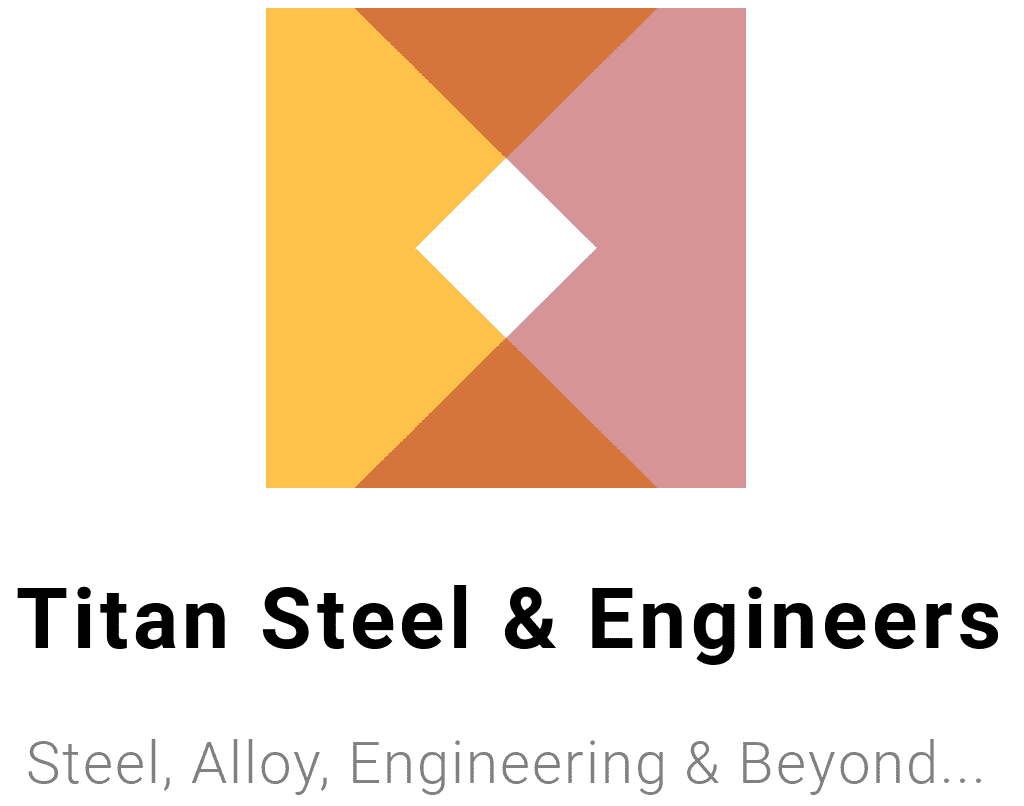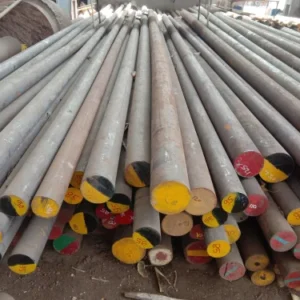Description
19MnCr5 Alloy Steel Overview
19MnCr5 is a medium carbon, alloy steel known for its excellent mechanical properties and versatility in various engineering applications. This steel is a member of the chromium-manganese steel family and is recognized for its good hardenability, strength, and wear resistance. It is commonly used in components that require high toughness and fatigue strength, such as in the automotive and machinery industries.
Key Features of 19MnCr5 Alloy Steel:
- Good Hardenability: Provides a balanced combination of hardness and strength after heat treatment.
- High Toughness: Offers good impact resistance and ductility, making it suitable for high-stress applications.
- Wear Resistance: Enhanced resistance to wear and abrasion, ideal for components subjected to continuous use.
- Machinability: Provides good machinability in the annealed condition, allowing for precise manufacturing.
Applications of 19MnCr5 Alloy Steel
19MnCr5 is utilized in a variety of applications where strength, toughness, and wear resistance are crucial. Its properties make it suitable for various engineering and automotive components.
Typical Applications Include:
- Automotive Industry: Gear wheels, shafts, and differential gears.
- Engineering Machinery: Heavy-duty components like crankshafts and drive shafts.
- Industrial Equipment: Parts for machinery and equipment that require high fatigue resistance.
- General Engineering: Components for high-stress and wear-resistant applications.
Equivalent Grades of 19MnCr5 Alloy Steel
19MnCr5 alloy steel has equivalents in different international standards, making it accessible and versatile across various regions.
| Standard | Equivalent Grade |
|---|---|
| DIN | 19MnCr5 |
| EN | 1.7147 |
| AISI/SAE | 5115 |
| BS | 817M40 |
| UNS | G51150 |
Chemical Composition of 19MnCr5 Alloy Steel
The chemical composition of 19MnCr5 is carefully controlled to achieve the desired mechanical properties and performance characteristics. The following table outlines the typical composition of 19MnCr5 alloy steel:
| Element | Composition (%) |
|---|---|
| Carbon (C) | 0.17 – 0.22 |
| Silicon (Si) | 0.15 – 0.35 |
| Manganese (Mn) | 1.00 – 1.30 |
| Phosphorus (P) | ≤ 0.035 |
| Sulfur (S) | ≤ 0.035 |
| Chromium (Cr) | 0.80 – 1.20 |
This composition ensures that 19MnCr5 alloy steel maintains its strength, toughness, and wear resistance under various conditions.
Mechanical Properties of 19MnCr5 Alloy Steel
The mechanical properties of 19MnCr5 are crucial for its performance in high-stress applications. The following table summarizes the typical mechanical properties:
| Property | Value (Typical) |
|---|---|
| Tensile Strength (MPa) | 600 – 800 |
| Yield Strength (MPa) | 400 – 600 |
| Elongation (%) | ≥ 12 |
| Impact Toughness (J) | ≥ 40 (at room temperature) |
| Hardness (HB) | 200 – 250 |
These properties highlight the ability of 19MnCr5 to perform well under significant stress and impact.
Heat Treatment of 19MnCr5 Alloy Steel
Proper heat treatment is essential for optimizing the mechanical properties of 19MnCr5 alloy steel. The typical heat treatment processes include:
- Hardening: Heat to 830 – 860°C and quench in oil or water to increase hardness and strength.
- Tempering: Heat to 150 – 250°C after hardening to reduce brittleness and enhance toughness.
- Normalizing: Heat to 850 – 900°C and air cool to refine the grain structure and improve toughness.
These processes help achieve the desired balance of hardness, toughness, and strength.
Hardness of 19MnCr5 Alloy Steel
The hardness of 19MnCr5 alloy steel can vary depending on the heat treatment it undergoes. Typical hardness values are:
- Annealed Condition: 190 – 210 HB
- After Hardening and Tempering: Up to 58 HRC
These hardness values indicate that 19MnCr5 can achieve high levels of strength and wear resistance while maintaining good toughness.
Physical Properties of 19MnCr5 Alloy Steel
The physical properties of 19MnCr5 ensure stability and performance under various operating conditions. The following table summarizes these properties:
| Property | Value |
|---|---|
| Density (g/cm³) | 7.85 |
| Melting Point (°C) | 1420 – 1450 |
| Thermal Conductivity (W/m·K) | 30 – 35 |
| Specific Heat Capacity (J/kg·K) | 460 – 480 |
These properties help ensure that 19MnCr5 alloy steel maintains its performance across different temperature and load conditions.
Forging Properties of 19MnCr5 Alloy Steel
19MnCr5 alloy steel can be forged within the temperature range of 1150 – 1250°C. Proper cooling after forging is necessary to avoid internal stresses and ensure dimensional stability.
Stress Relieving for 19MnCr5 Alloy Steel
Stress relieving involves heating the steel to 600 – 650°C to remove residual stresses from machining or forming. This process is followed by slow cooling to improve dimensional stability.
Normalizing 19MnCr5 Alloy Steel
Normalizing is performed by heating the steel to 850 – 900°C and allowing it to cool in air. This process improves toughness and refines the grain structure.
Annealing 19MnCr5 Alloy Steel
Annealing involves heating the steel to 680 – 720°C and cooling it slowly in the furnace. This process improves machinability and prepares the steel for further heat treatments.
Machinability of 19MnCr5 Alloy Steel
19MnCr5 alloy steel offers good machinability, especially in its annealed condition. It can be machined into complex shapes with standard cutting tools, though tool wear should be managed during high-hardness operations.
Welding of 19MnCr5 Alloy Steel
Welding of 19MnCr5 alloy steel is feasible with appropriate preheating (to about 150 – 200°C) and post-weld heat treatment. Proper procedures must be followed to avoid issues such as cracking or reduced toughness.
Supply Cities:
Mumbai Ahmedabad, Amaravathi, Ambattur, Bangalore, Belgaum, Chennai, Chittoor, Coimbatore, Dindigul, Mysore, Nellore, Hyderabad, Kochi, Mangalore, Tirupur, Tuticorin, Madurai, Andhra Pradesh, Karnataka, Puducherry, Kerala, Tamil Nadu, Telangana, Visakhapatnam, Kochi, Kerala, Hubli-Dharwad, Karnataka, Ghaziabad Kolkata.






